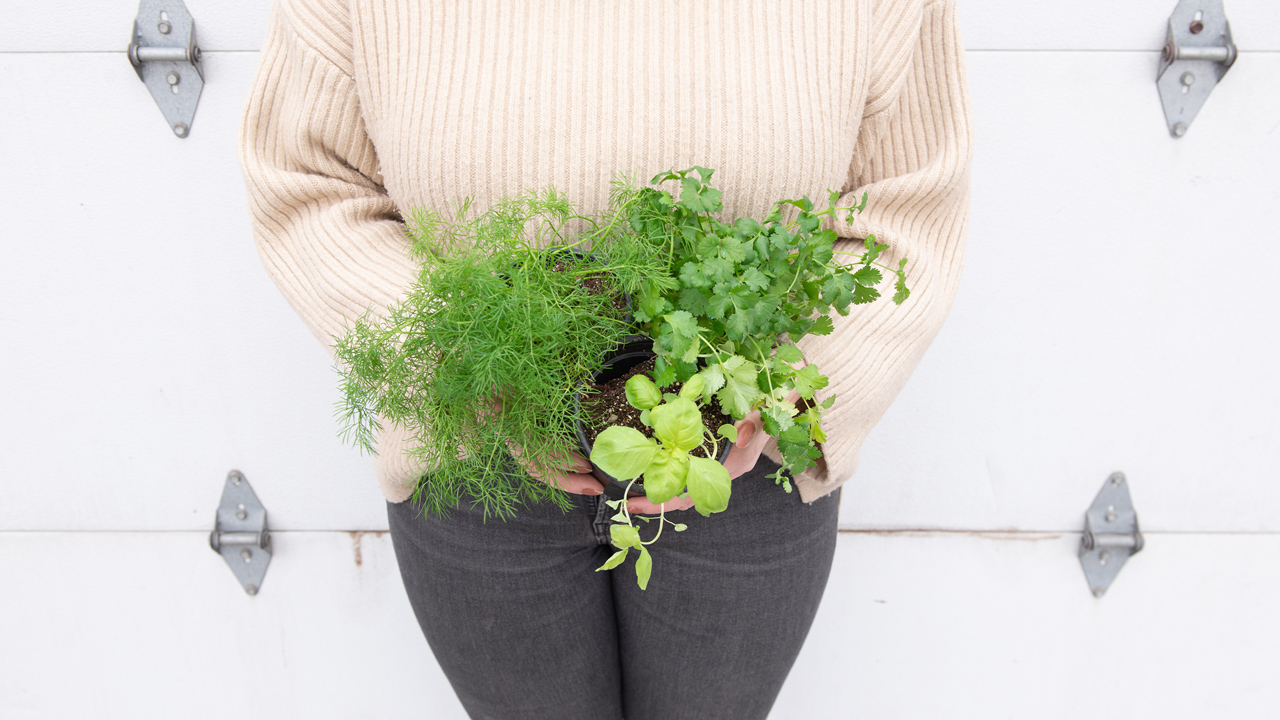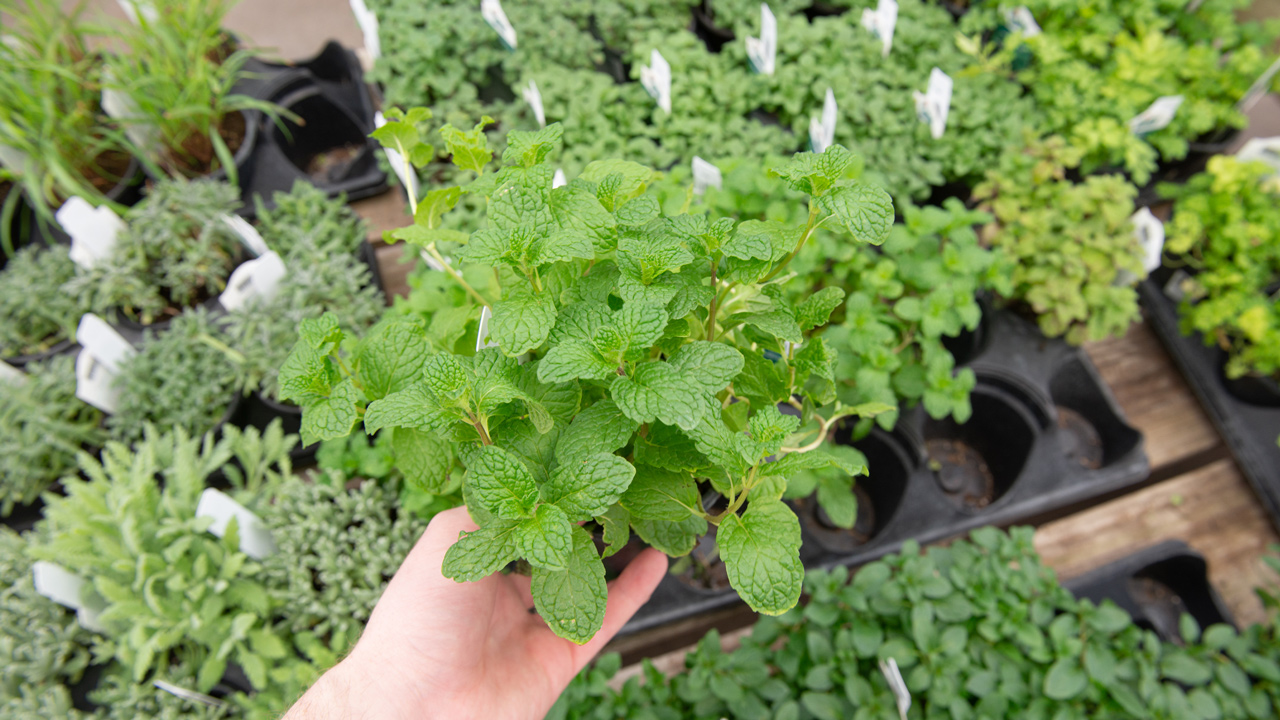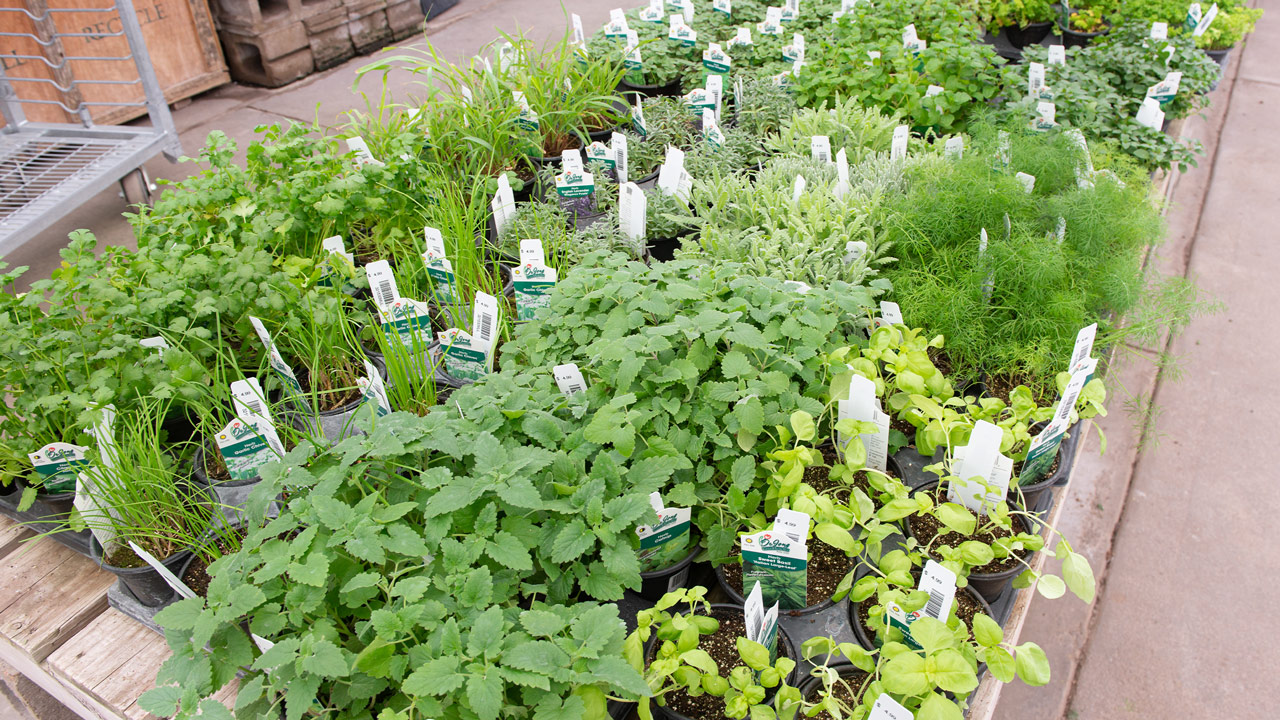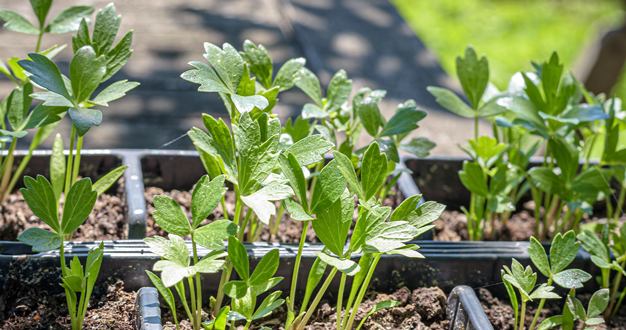
Fresh herbs give our favorite recipes such full flavor and aroma, making them a continual favorite for the summer garden. But even in the cold months of winter, we can still relish an ongoing supply of herbs by nurturing them as indoor houseplants. Didn’t think it was possible? It is! With a sunny window and a little care, you can grow all kinds of your favorite culinary herbs to use throughout the winter months too.

Why Fresh?
Do fresh herbs really make that much of a difference in cooking? They do. Although both fresh and dried herbs bring unique and important contributions to our recipes, certain cooking methods bring out the best in each one. For instance, dried herbs work best in dishes with long, slow cooking times – like soups and sauces. Heat and time allow the herbs to soften and infuse all that flavorful goodness throughout the entire dish. The drying process also concentrates the flavors – particularly in woodier herbs like oregano, thyme, and rosemary – which means you can use about one-third of the amount you would use fresh.
But fresh herbs don’t need heat to release their more delicate, balanced, and nuanced flavors and aromas – and certain recipes would never be the same without these special qualities. Fresh herbs shine their brightest when there’s little to no heat involved – fresh salad dressings and sauces, lemonades and other drinks, and beautiful garnishes for special entrees. If you do add fresh herbs to a simmering dish, add them toward the end of the cooking process. This way, you can enjoy a burst of flavor and aroma before the volatile oils that create them can dissipate.
And combining both fresh and dried herbs in one dish can utilize the unique qualities of both. For example, a chef might use dried oregano to flavor a pizza sauce, then top the newly-baked pie with thin ribbons of fresh basil right before serving.
Good Light Is the Key
Many of our favorite culinary herbs – like oregano, mint, thyme, and rosemary – thrive outdoors in the bright sunshine through the growing season. Indoors, that means they crave as much light as we can give them in order to continue providing that fresh, flavorful foliage. Look for a spot near a south or east window that gives your herbs a nice, broad view of the sky for most of the day – with periods of direct sunshine too. And it’s a good idea to rotate your herbs periodically so that bright sunlight can reach all parts of the plant equally.
But if your home doesn’t offer such bright light – and many indoor spaces don’t – you’re not out of luck. Herbs do well under supplemental grow lights too.

Water With Care
Another key to indoor success with culinary herbs is proper watering – both the amount and timing. As is the case with any houseplant, light and water are in close partnership. When they’re outdoors during the summer, most herbs enjoy consistently moist soil – but out there the light is so much more abundant, and they use that water as fast as you provide it. Inside the house is another story. Lower light levels mean herbs photosynthesize less and therefore take up less water. At the same time, they’re sensitive to long periods with damp soil – it’s easy to overwater them.
To make watering indoor herbs easier, first set them where they can get plenty of light. Then, be sure their containers drain well. And last, let the top of the soil dry out a bit before watering thoroughly again.
Go Easy on the Fertilizer
Conventional houseplant wisdom suggests avoiding fertilizer in the winter when plants aren’t actively growing because it can actually damage the plants if it’s not getting used. But if your herbs get enough good light and are regularly trimmed, which encourages new growth, fertilizer can be very helpful. Just keep in mind that during the winter, you won’t need to use the full strength. Instead, you can dilute a balanced, water-soluble fertilizer and apply it about once a month while your herbs are indoors.

More Tips for Success
After light, water, and fertilizer are taken care of, you’re well on your way to a productive indoor herb garden. For even more success, consider some of these helpful tips too.
- Use your herbs. Regular harvesting encourages branching and lots of tender new growth that’s more flavorful than older foliage.
- Stick with your favorites. Just one or two individual herbs may not be able to keep up with your recipes, so it’s a good idea to have multiple plants of a few essential favorites rather than one example of many varieties. You can always expand your selection again in the summer garden.
- Avoid drafts. Be sure to keep your herbs away from heat vents and not too close to chilly windows.
- Keep the air moving. Keeping a little space between your herbs and running an oscillating fan on the lowest setting a few hours a week are great ways to help indoor herbs avoid fungal problems like powdery mildew that thrive in motionless indoor air.
- Trim the roots if needed. If your herb appears to decline even with all the right care, it may be feeling root bound – but repotting generally isn’t the answer outside of the regular growing season. Instead, lift the herb and its root ball out of the pot and trim away a half-inch or so of the root system from the bottom. Then add fresh soil to the pot and resettle the plant.
- Send them out in the spring. A summer spent outdoors is the best way to recharge an herb’s batteries after a winter spent inside. When planting season comes around, let your herbs go outside too – they’ll bask in the sun, warmth, and humidity and be ready to come back inside again next fall.

Houseplants You’ll Love to Have in the Kitchen
All houseplants earn their keep in one way or another, but herbs take it a step further by feeding us too. If you’re a foodie missing the flavor and aroma of fresh, homegrown herbs, we invite you to take home a pot of oregano, mint, rosemary, basil, or thyme to help you and your recipes get through the wintery months. Have questions? Just ask – we’re always glad to help.


